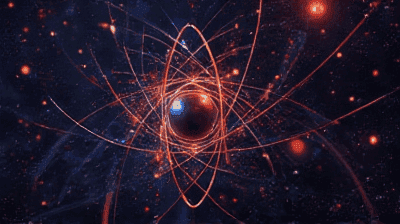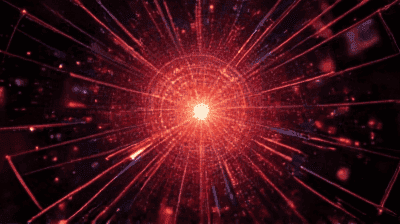
The universe is a vast and mysterious place, filled with countless wonders that spark our curiosity and ignite our imaginations. Among these wonders, perhaps none is as enigmatic and fascinating as the Higgs boson, often referred to as the "God particle." This intriguing particle plays a crucial role in our understanding of the universe, particularly when it comes to the concept of mass. But what exactly is the Higgs boson, and why is it so important?
The Basics of Particle Physics
To understand the Higgs boson, we first need to delve into the world of particle physics. At the most fundamental level, matter is made up of particles, which are the building blocks of the universe. The Standard Model of particle physics is a theoretical framework that describes these fundamental particles and their interactions. It includes two main categories of particles: fermions and bosons.
Fermions are the building blocks of matter and include particles such as quarks and leptons. Quarks combine to form protons and neutrons, which make up atomic nuclei, while leptons include electrons, which orbit the nuclei. On the other hand, bosons are force-carrier particles that mediate the fundamental forces of nature. For example, photons are the bosons that carry the electromagnetic force, while gluons are responsible for the strong nuclear force.
The Mass Mystery

One of the key challenges in particle physics is understanding why particles have mass. In everyday life, we experience mass as a property of matter, but at the subatomic level, mass is not as straightforward. The origin of mass is tied to the Higgs field, an energy field that permeates the universe.
The existence of the Higgs field was proposed in the 1960s by physicist Peter Higgs and several colleagues. They theorized that this field is responsible for imparting mass to elementary particles. According to their theory, particles interact with the Higgs field in varying degrees, which results in different masses for different particles. Particles that interact strongly with the Higgs field gain more mass, while those that do not interact as much remain relatively light.
Enter the Higgs Boson
The Higgs boson is the quantum manifestation of the Higgs field. In other words, it is the particle associated with the field that gives mass to other particles. Initially, the discovery of the Higgs boson was highly sought after because it would provide experimental evidence for the existence of the Higgs field and confirm the theoretical framework established by the Standard Model.
The search for the Higgs boson culminated in July 2012, when scientists at CERN announced the discovery of a particle consistent with the Higgs boson. This announcement was met with excitement and jubilation within the scientific community, as it validated decades of theoretical work and opened up new avenues for research.
The Importance of the Higgs Boson

The discovery of the Higgs boson has profound implications for our understanding of the universe. Here are a few key reasons why this particle is so important:
Confirmation of the Standard Model: The discovery of the Higgs boson provided crucial evidence for the Standard Model, which describes the fundamental particles and their interactions. It solidified our understanding of the universe at the smallest scales.
Understanding Mass: The Higgs boson is central to our understanding of mass and how it emerges from interactions with the Higgs field. This understanding has far-reaching implications in both theoretical and experimental physics.
Cosmological Insights: The Higgs field may have played a role in the early moments of the universe, influencing the formation of matter and the large-scale structure we observe today. Studying the Higgs boson could provide insights into the conditions present shortly after the Big Bang.
Beyond the Standard Model: Although the discovery of the Higgs boson confirmed many aspects of the Standard Model, it also raised new questions. For example, why is the mass of the Higgs boson itself so much lighter than expected based on theoretical predictions? Exploring these questions may lead to new physics beyond the Standard Model.
The Search for the Higgs Boson
The search for the Higgs boson was a monumental scientific endeavor that involved thousands of scientists from around the world. The primary facility for this search was the Large Hadron Collider (LHC) at CERN, the European Organization for Nuclear Research. The LHC is the world's largest and most powerful particle accelerator, designed to collide protons at incredibly high energies.
During these collisions, a multitude of particles are produced, including the fragile Higgs boson, which decays almost instantaneously into other particles. Detecting the Higgs boson requires sophisticated detectors that can identify these decay products and discern them from the background noise of other collision events.
Scientists looked for specific signatures in the data that could indicate the presence of the Higgs boson. One of the key decay channels studied was the Higgs boson decaying into two photons, which has a distinct experimental signature. After analyzing vast amounts of collision data, researchers were able to identify events consistent with the Higgs boson, leading to the landmark announcement in 2012.
Implications for Future Research

The discovery of the Higgs boson has opened new frontiers in particle physics and cosmology. Researchers are now investigating various aspects of the Higgs field and its interactions with other particles. Here are a few areas of ongoing research:
Higgs Boson Properties: Scientists are studying the properties of the Higgs boson, such as its mass, spin, and couplings to other particles. Understanding these properties will help to refine our theoretical models and could reveal new physics.
Higgs Field and Dark Matter: The nature of dark matter remains one of the biggest mysteries in astrophysics. Some researchers are exploring whether the Higgs field could be related to dark matter and if interactions with the Higgs boson could provide clues about its nature.
Beyond the Standard Model: The Standard Model is a successful but incomplete theory. Exploring the implications of the Higgs boson may lead to new theories that go beyond the Standard Model, including ideas related to supersymmetry, extra dimensions, or other undiscovered particles.
Cosmic Evolution: Understanding the role of the Higgs field in the early universe may provide insights into cosmic evolution, including the formation of galaxies and large-scale structures.
Conclusion
The Higgs boson, often dubbed the "God particle," plays a fundamental role in our understanding of the universe. Its discovery not only confirmed the existence of the Higgs field but also solidified the Standard Model of particle physics. As researchers continue to investigate the properties and implications of the Higgs boson, we may unlock new mysteries of the universe and expand our understanding of the fundamental nature of reality.
The journey to understand the Higgs boson is far from over. It represents a beacon of hope for physicists, guiding them toward new discoveries and deeper insights into the fabric of our cosmos. As we continue to unravel the secrets of the universe, the Higgs boson remains a pivotal piece of the puzzle, illuminating the path to a more comprehensive understanding of mass, matter, and the forces that govern our existence.








